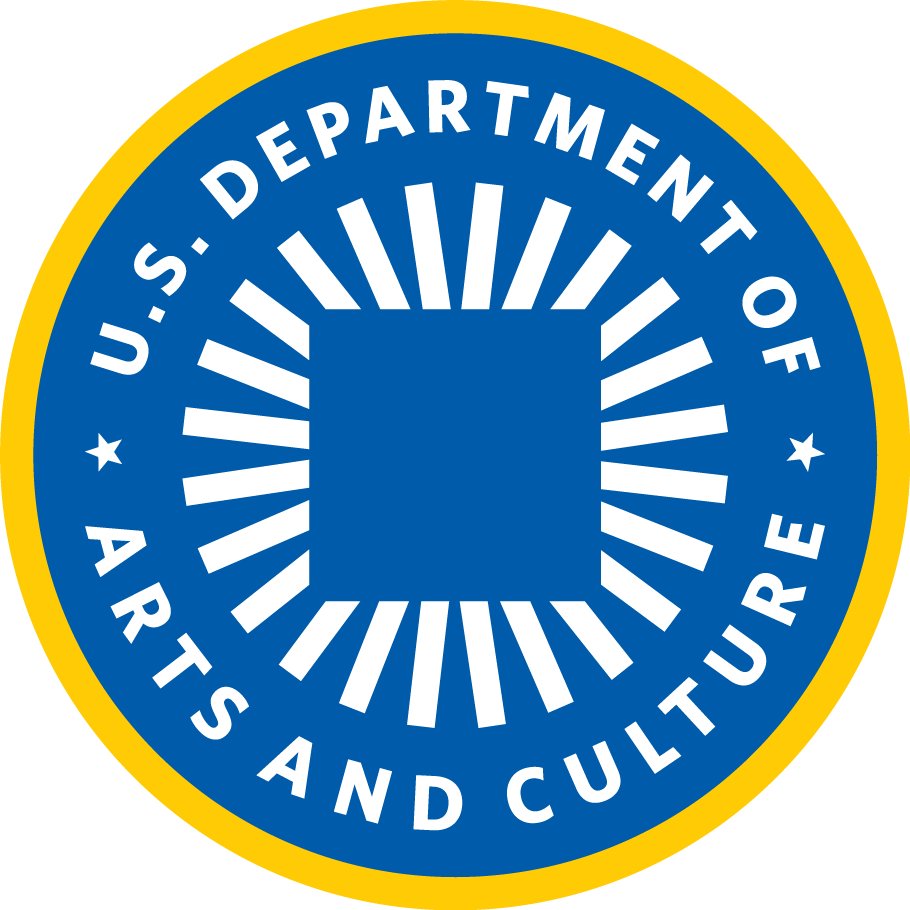Some of our most commonly used words and phrases, defined.
ACTION RESEARCH describes an approach of learning by doing. In action research, studying conditions leads to collaborating with others to change them. Based on the results of action research, the USDAC’s focus and approach are refined.
CITIZEN ARTIST describes anyone who enlists in the USDAC, endorsing the Statement of Values. Citizen Artists work in many arenas, media, and locations. It isn’t necessary to be a professional artist nor to be a U.S. citizen to be a Citizen Artist.
COMMUNITY CULTURAL DEVELOPMENT describes a range of initiatives undertaken by artist-organizers in collaboration with other community members to express identity, concerns and aspirations through the arts and communications media, building cultural capacity and contributing to social change. Sometimes abbreviated CCD.
CULTURAL AGENT describes a volunteer creative organizer selected from a nationwide open call to enact the USDAC at a local level by hosting Imaginings. Each cohort of Cultural Agents works together to help spark a larger national conversation and movement cultivating the empathy and imagination we need to create a future we wish to inhabit.
CULTURAL CITIZENSHIP describes a condition in which every person feels at home in his or her own community, in which all contributions to history and culture are acknowledged and reflected in the cultural landscape, in which full inclusion is a lived reality granted to all regardless of identity, legal status, or other characteristics.
CULTURAL DEMOCRACY describes a philosophy or policy emphasizing pluralism, participation, and equity within and between cultures. Although it has roots in anti-Ku Klux Klan writings of the 1920s, it did not come into common usage until introduced as a policy rubric in Europe in the 1960s.
CULTURAL EQUITY describes the goal of a movement originated by artists and organizers from communities of color and their allies, dedicated to ensuring a fair share of resources for institutions focusing on non-European cultures. The goal of cultural equity organizing is to redress and correct historic imbalances in favor of European derived culture.
CULTURAL POLICY describes the aggregate of values and principles guiding any social entity in cultural affairs. Cultural policies are most often made by governments, from school boards to legislatures, but also by many other institutions in the private sector, from corporations to community organizations. Policies provide guideposts for those making decisions and taking actions that affect cultural life.
CULTURE in its broadest, anthropological sense includes all that is fabricated, endowed, designed, articulated, conceived or directed by human beings, as opposed to what is given in nature. Culture includes both material elements (buildings, artifacts, etc.) and immaterial ones (ideology, value systems, languages).
DEVELOPMENT (with its many subsets such as “economic development,” “community development” and “cultural development”) describes a process of analyzing the resources and needs of a particular community or social sector, then planning and implementing a program of interlocking initiatives to rectify deficiencies and build on strengths. The community cultural development field stresses participatory, self-directed development strategies, where members of a community define their own aims and determine their own paths to reach them, rather than imposed development, which tends to view communities as problems to be solved by bringing circumstances in line with predetermined norms.
FIELD OFFICES are local nodes of the USDAC, established by Cultural Agents and their teammates for continued organizing after Imaginings. Field Offices coordinate and multiply the impact of our collective efforts by promoting, disseminating, and enacting USDAC values in a way that is locally rooted and relevant. IMAGININGS are vibrant, arts-infused gatherings which bring together a diverse cross-section of neighbors to 1) envision their towns and cities in 20 years, when the full transformative power of art and culture has been integrated into the fabric of society; and 2) to identify ways to get there, harnessing latent artistic talent and local cultural resources.
SOCIAL FABRIC (also cultural fabric) describes the aggregate of embedded history, customs, modes of gathering and communication, relationships, and institutions that sustain and enliven community life.
SOCIAL IMAGINATION describes the capacity to envisage alternatives to existing social arrangements, institutions, and policies. Social imagination asserts each person’s right to a voice in society, helping to shape the future.
SOCIAL JUSTICE describes a condition in which equity, inclusion, fairness, and integrity shape social reality. When social justice prevails, entrenched privilege is replaced by full, participatory democracy, and full human rights are guaranteed to all.
STORY CIRCLE describes a small group of individuals sitting in a circle, sharing stories—usually from their own experience or imagination—focusing on a common theme. As each person in turn shares a story, a richer and more complex story emerges. By the end, people see both real differences and things their stories have in common. A story circle is a journey into its theme, with multiple dimensions, twists, and turns. Story circles are often understood as deriving from indigenous traditions. There are many variations. Theater makers such as Roadside Theater and John O’Neal have been central in developing the practice for use in creating original performance and community telling and listening projects.
